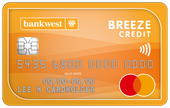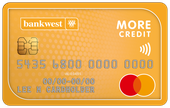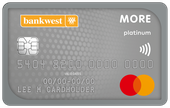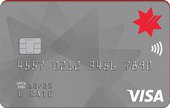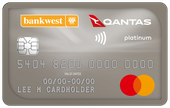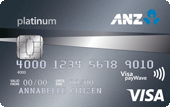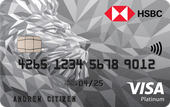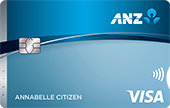Temporary resident credit card benefits
If you’re in Australia on a working or study transfer for a limited time, or are a temporary resident hoping to apply for permanent residence, there are lots of reasons why you’ll want to apply for an Australian credit card.
1. Avoid exposure to currency fluctuations
If you use an overseas-issued credit card to make purchases in Australian dollars, your card issuer will convert the individual Australian dollar amounts into the native currency of your card, which could be, for example, US, NZ, Canadian or Singapore dollars, British pounds, euros or Japanese yen. You will need to make a payment in your foreign card’s currency each month in order to clear the balance once it has been converted from Australian dollars.
There’s a secondary problem too. The exchange rate used by your card issuer is unlikely to be the most competitive available on the day of the transaction, especially if you opt for Dynamic Currency Conversion, which looks good on the surface (you know instantly how much you will be charged in your card’s native currency), but could work out to be very expensive (the exchange rate may be a rip-off).
This means that every Australian dollar purchase transaction exposes you to foreign exchange rate fluctuations between the relative value of the Australian dollar and the currency of your card. Sometimes you’ll win, sometimes you’ll lose, but you’ll never know in advance what’s going to happen and it’s an unnecessary risk. It’s much better to match the currency you’re purchasing in with the currency you’re paying in.
2. Avoid foreign transaction fees
Every purchase you make in Australian dollars on your foreign credit card will register as an overseas transaction as far as your card issuer is concerned. It is very likely that you will incur a fee on each transaction, levied as a percentage of the transaction amount once it has been converted into your card’s native currency.
For credit cards issued in the US, for example, this fee is commonly 3% of the converted US dollar amount.
You can avoid this fee by using an Australian-issued card for your everyday transactions incurred in Australia – and there will be many of these since you’re living here.
3. Make the monthly repayment process easier
Paying off the monthly balance on an Australian credit card is easy, provided you also have an Australian bank transaction account (which most non-citizen residents will need to have, in any case). You just transfer the payment from your transaction account to your credit card, using internet banking or a phone app.
But repaying the balance on your foreign credit card is a little more complicated, unless you are also maintaining a bank transaction account in your country of citizenship, with a regular overseas income which can be used to cover your expenses incurred in Australia.
However, in most cases, foreigners resident in Australia will also be earning their income in Australian dollars, paid into an Australian bank account.
In order to pay off their foreign credit card balance they will need to go through a more lengthy online payment process, involving an IBAN (recognised International Bank Account Number format), and a SWIFT or BIC code (to identify the branch at which the beneficiary account is held – not easy for a credit card).
To make matters worse, online overseas fund transfers usually involve hefty fees, plus the possibility of a second fee chargeback by the beneficiary (your foreign credit card issuer).
This complicated process, with the accompanying high fees, can be avoided if you have an Australian credit card.
4. Build up a credit score in Australia
For Australian residents, there are many benefits to be derived from establishing a good credit history in Australia, so that you can earn a high credit score. This will be important if you need to rent somewhere to live, sign up with utility providers and perhaps take out a car loan or lease. If you decide to stay in Australia for the long term, perhaps applying for citizenship, you may need a housing loan or a personal loan. All these facilities require the applicant to have a good credit score.
If your credit score result is disappointing, it could be because your credit history in Australia is limited by the fact that you are using a foreign credit card to pay all your Australian bills. While lenders may be able to see that you’ve paid your rent and utility providers on time, there’s a whole lot of good information missing because it’s difficult, if not impossible, for them to see how you’ve conducted your foreign credit card account. Owning an Australian credit card, and operating the account responsibly, can help you build up a good credit history in Australia.
Australian banks that accept temporary residents
All of the Big Four Australian banks (ANZ, Commonwealth, NAB, and Westpac), plus American Express and some of the lesser or overseas-owned banks, are prepared to issue credit cards to holders of the visa type ‘Temporary Skill Shortage Visa (subclass 482)’ (or ‘TSS visa’). You’ll be able to choose from a variety of interest rates, rewards programs, complimentary benefits and annual fees, whether you’re looking for a Visa, Mastercard, or American Express card.
What kind of visa do you need to get a credit card?
The Australian government’s Department of Home Affairs has a web page listing all current and former visa types, with links to an explanation of each one.
Current visas listed include visitor visas, studying and training visas, family and partner visas, working and skilled visas, refugee and humanitarian visas, ‘other visas’ (special purpose visas) and repealed visas.
- Visitor and transit visas of the type granted to tourists are not accepted.
- Bridging, transport crew, medical treatment and other short-term special purpose visas will almost certainly be ineligible.
- Working holiday visas (subclasses 417 and 462) are not eligible for any of cards.
- Student and training visas (subclasses 500, 590, 407) may also make the holder eligible for a few credit cards.
- Family and partner visas, of which there are many, vary in whether or not they allow the holder to work, and whether the stay is temporary or permanent. Some of these visas are for minors or for aged and dependent relatives, who would not qualify for a card in their own right but might be eligible as a supplementary cardholder.
- Temporary graduate visas (subclasses 476 and 485) allow the holders to work and should be OK.
- Refugee and humanitarian visas allow the holders to work and stay either permanently or for several years, so should be acceptable.
- Resident return visas (subclasses 155 and 157) are for non-citizen permanent residents of Australia, and should confer the same eligibility as Australian citizenship where credit cards are concerned.
The most common type of working visa are working and skilled visas, and are the most likely to grant credit card eligibility for temporary residents. Among the most accepted are:
- Temporary Work (Skilled) Visa (subclass 457), no longer available to new applicants.
- Temporary Skill Shortage Visa (TSS) (subclass 482), which has replaced subclass 457.
- Other temporary work visas (408, 403 and 400).
- Business visas, talent visas, skilled visas, investor visas and employer nomination visas (many subclasses).
- Temporary Work (International Relations) Visa (subclass 403).
Many Australian credit card issuers still mention the Temporary Work (Skilled) Visa (subclass 457) when referring to the type of visa most commonly accepted for credit card purposes. This type of visa is no longer issued to new applicants, although you may have one of these if you have been in Australia for a while.
More recent arrivals can safely assume that the Temporary Skill Shortage Visa (TSS) (subclass 482) is identical to sub class 457 for the purposes of making a credit card application.
Note that not all banks will accept all visa types, and some may accept only a limited number of visa subclasses. Contact the card issuer if you are unsure before you make your application. You may also find that banks require you to have a specified minimum amount of time left on your visa before it expires, when you make your card application.
Required documentation
As well as your valid visa, there is other documentation you will need to assemble before you begin your application.
Passing the 100-point check
Australia has a compulsory personal identification system for financial institution customers, called the ‘100-point check’. When you first open an account with a new bank, you need to produce documents proving who you are and where you live. Many of the point-scoring documents, such as utility bills or a Medicare card, are issued only in Australia, and temporary residents or recently-arrived applicants may have difficulty in producing them. Fortunately, a foreign passport alone will usually score 70 points, an Australian driver's licence or tertiary student identity card will add another 40 points, while a foreign or international driver's licence will add 25 points. You may find it easier to apply for a credit card issued by the bank where you have your everyday banking transaction account, to avoid going through the 100-point check procedure twice.
For applicants who are not Australian citizens, card issuers may possibly have more stringent ID requirements. The documents most likely to be asked for are:
- A photocopy of the personal details page of your foreign passport
- A photocopy of the Australian visa page in your foreign passport, so that the card issuer can check it online via the VEVO system
- A photocopy of your foreign birth certificate or citizenship certificate
- A photocopy of your foreign driver’s licence (if you haven’t supplied an Australian driver’s licence)
Documents in a language other than English may need to be translated by a certified translator.
As well as the above documents, you will also need to supply your current Australian address and possibly your previous overseas address. The bank will need details of your employer and your income. They will have little else on which to base their assessment of your creditworthiness. However, if you have been in Australia for a while, it’s worth checking your credit score to see in advance what the bank will know about you.
You will also need to provide details about your employer and your income, and the bank will almost certainly want to verify this with your employer since they will have little else on which to assess your creditworthiness. Other documents you could be asked to produce include your foreign birth certificate or citizenship certificate and your foreign driver’s licence. Some card issuers may also want to know not just your current address but your last overseas address as well.
Minimum income requirement
One drawback of applying for a card as a temporary resident is that the card issuer may require you to demonstrate a higher level of income when compared with the conditions relating to Australian citizens or permanent residents. This is because there may be difficulties in obtaining your credit history information from overseas, meaning that your income and assets are the only basis on which to assess your creditworthiness.
Since there is a minimum income threshold for workers granted a TSS visa (the Temporary Skilled Migration Income Threshold), currently set at $53,900, an annual income of at least this amount should be sufficient to qualify for many credit cards. Even if you’re allocated a fairly restrictive credit limit to begin with, you may be able to apply for a higher limit once you’ve established some credit history in Australia.
Alternative (if you have family in Australia)
Many types of Australian visa holders can bring family members with them to live in Australia, and the family members of primary visa holders can also usually work in Australia if they wish to do so. This means that they could apply for their own credit card account.
However, it may be easier (and less expensive) for family members to simply have a supplementary card on a credit card account belonging to the primary visa holder. Supplementary cardholders can make purchases and take cash advances (which are charged to the primary cardholder’s account) with their card, view the account via internet banking and organise account repayments. But supplementary cardholders can’t apply for a credit limit increase, close the account, or spend any rewards points which may have been earned.
The primary cardholder is also wholly and solely responsible for the debt represented by the credit card account balance, regardless of which card or cards attached to the account contributed to it.
